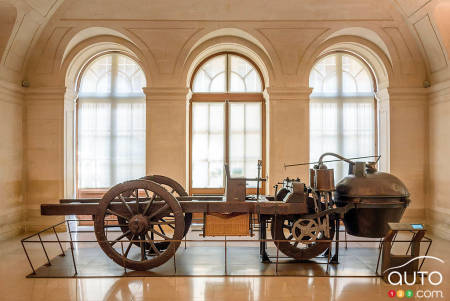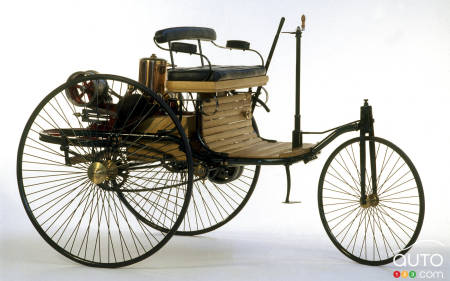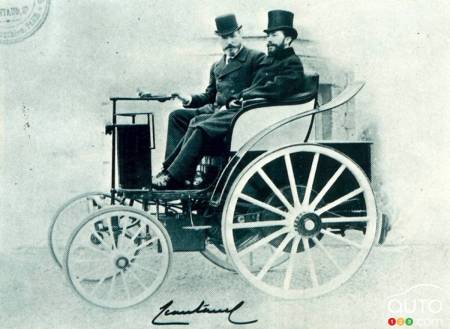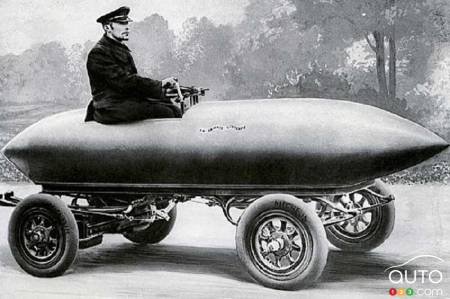Auto123 puts the Kia Niro EV to the long-term test. Today, Part 2.
See also: Kia Niro EV Long-Term Review, Part 1: The carmaker, the reviewer and the (young) enthusiast
See also: Kia Niro EV Long-Term Review, Part 4: Getting a charge out of charging
I wouldn't go so far as to say that electric cars are on everyone's lips, but they’re on many. Pro and con, there’s lots of talk surrounding the concept, and by this point it’s pretty obvious EVs are no passing fad. The figures tell the story: the electric-vehicle phenomenon is growing.
Another indication? The big, bold announcements by manufacturers and ambitious startups. As motorists gradually start to warm up to the idea of going electric, most of the world’s automakers are laying down markers en route to full-on electric lineups. One after the other, they are promising that within 5, 10 or 15 years, such and such a percentage of their catalog will be electric, and that eventually their entire portfolio will be.
Which is a good thing and also to be expected, because the world’s major cities, provinces, states and countries are announcing at the same time that they will no longer tolerate the sale of new gasoline-powered vehicles on their territory as of such and such a fateful date.
The countdown is clearly on.
This is one of the reasons why the Niro EV that Kia Canada agreed to lend us for 12 months is so timely. Its raison d'être is driven by social, economic and ecological factors that are embraced by entire nations.
This move to electric mobility might seem sudden, but the idea is not at all new.

First, the steam
I won't begin to detail the fascinating history of the automobile here. For one thing, it would take hours. For another, you can satisfy your insatiable curiosity by perusing any number of the countless books devoted to the subject. If you've forgotten what a book is, your phone or tablet will deliver a wealth of information, even if it’s only via Wikipedia.
Still, let's try to summarize the essentials.
The neutrality of historians - if such a virtue event exists - is always vulnerable to their preconceived notions and their biases. So it is that the paternity of the automobile is often attributed to an inventor whose nationality so happens to coincides with that of the historian.
Nevertheless, to make a long story short, several competent authorities agree that the steam-powered Fardier produced by the Frenchman Joseph Cugnot in 1769 can be considered the first automobile. A quarter of a millennium ago, overgrown teenage boys were having fun driving a cart whose horses had been replaced by a giant kettle.
For more than a century, in the midst of the Industrial Revolution, steam was the form of energy favoured by many inventors, manufacturers and countries to advance the concept of the automobile (the word itself meaning, of course, something “self-propelled”). Then the advent of the internal combustion engine put an end to the reign of steam.

An idea that goes bang!
Here again, you can trace back to the middle of the 17th century the scientific advances that constituted the embryos of the internal combustion engine. Now, so very often, the big revolutionary ideas of history actually germinated in two researchers working simultaneously on the same discovery, but in different countries. Which of course only makes keeping your history straight more complicated.
The authorship of the carburetor is a matter of some controversy, while that of the four-stroke cycle is generally attributed to a German engineer named Nikolaus Otto - a predestined name, though the latter’s biggest contribution was really putting into practice the theory that had been put on paper a decade earlier by engineers Étienne Lenoir (a Belgian) and Alphonse Eugène Beau de Rochas (a Frenchman).
Karl Benz is credited with having put together the first real automobile when, in 1885, he drove around the perimeter of his house in the Benz 1 Tricycle, a three-wheeled vehicle with a single-cylinder combustion engine.
That same year, Gottlieb Daimler and his friend Wilhelm Maybach patented the first two-cylinder gasoline engine that could be mass-produced, the Daimler Type P. Their 1889 Daimler Stahlradwagen prototype would be the second automobile in history.
Meanwhile, even as the steam engine quietly gave way to the gasoline engine, the electric engine was making news, especially after the work of Gaston Planté and Camille Faure led to advances in battery technology.

The power goes on
The Tilbury of 1881 was presented at the International Electricity Exhibition in Paris, its enormous batteries under the seat. When Charles Jeantaud entered an electric car (with wooden wheels) in the Paris-Bordeaux round trip race in 1895, he had to pre-place charged batteries along the route to make up for the 50-km range (attainable if he did not exceed 30 km/h).
In 1898, Jeantaud’s Duc electric model attained a speed of 63 km/h, a new record. That was bettered the following year by an EV that flirted with 106 km/h, astounding for the time. We like to think that vehicle’s name – La Jamais Contente - was inspired by the Duc’s mother-in-law.

What all this tells you is that the EV is really not new. According to Wikipedia, as early as 1900, of the 4,192 vehicles manufactured in the United states that year, 936 were gasoline-powered, 1,681 still relied on steam and 1,575 used electricity.
The rest of the story is well-known, of course. Gasoline eclipsed all other forms of fuel and electric powertrains were relegated to the status of curiosities. There have been several books written seeking to explain why society consciously put aside an idea with so much, and such obvious, potential.
It took Mother Nature herself to convince us it was high time to bring electricity back to the forefront of our transportation modes. In the interval between General Motors' EV1 (1996 to 1999) and the Kia Niro parked in my driveway, a revolution took root and is now well underway.
In my next segment of this long-term review, we'll see just how the Niro EV and others like it are changing our lives, on paper. And in the following chapters, we'll explore how it is in the real world.
Specifications sheet of KIA Niro EV




